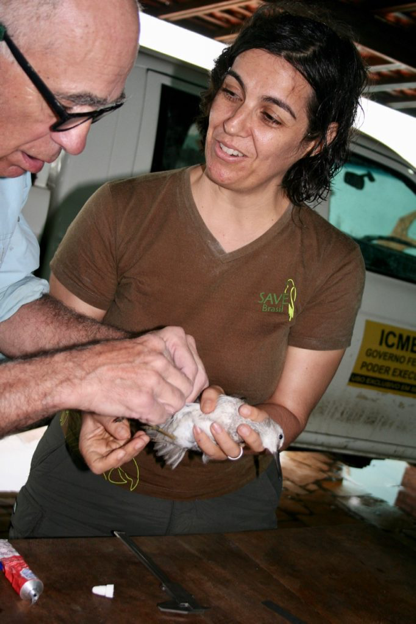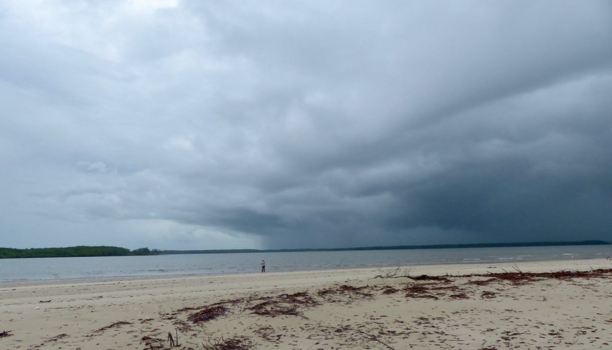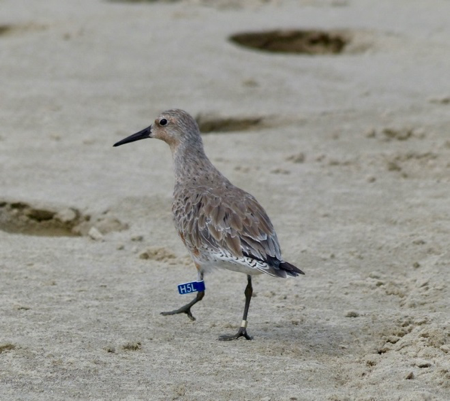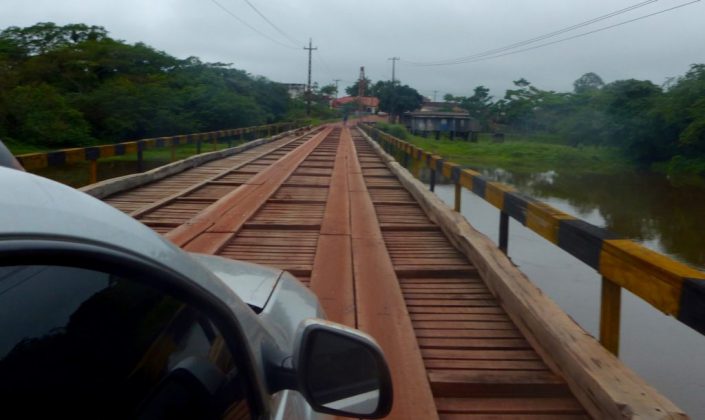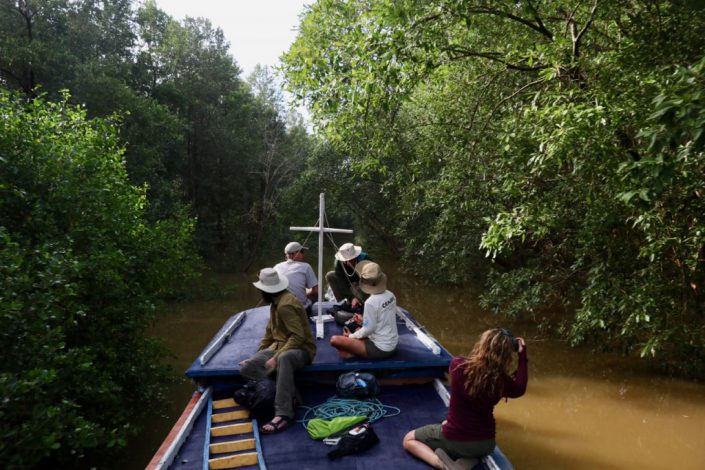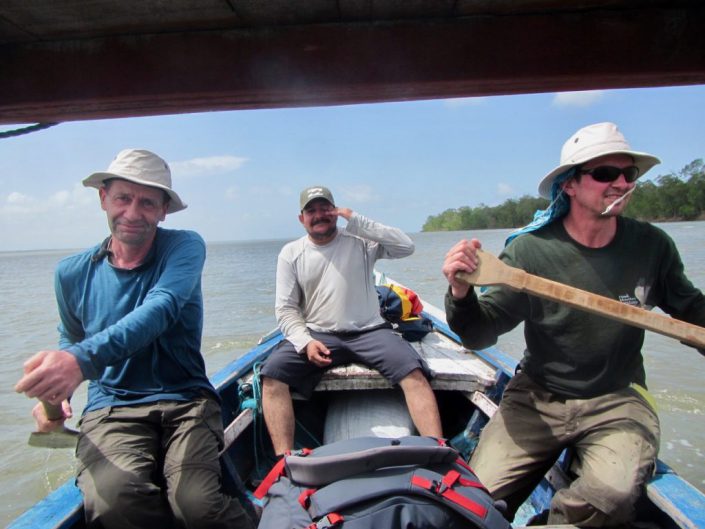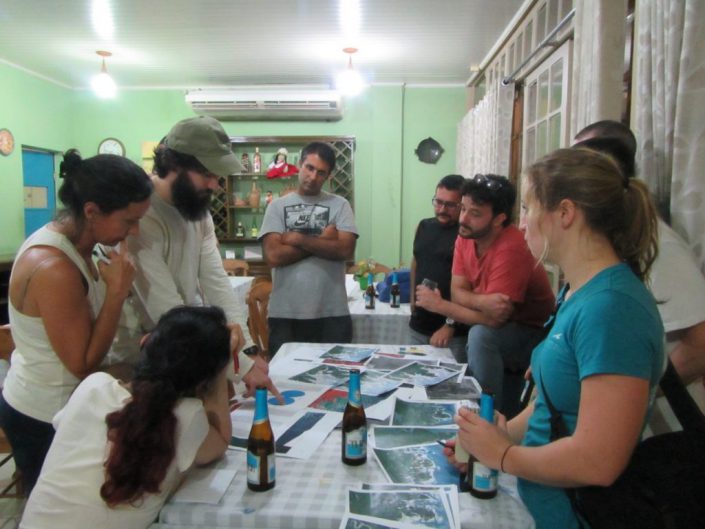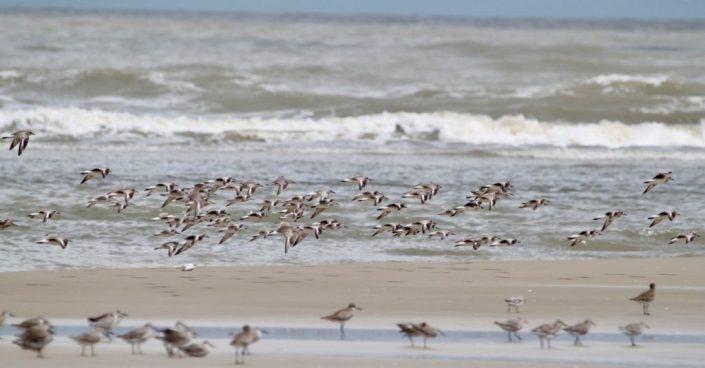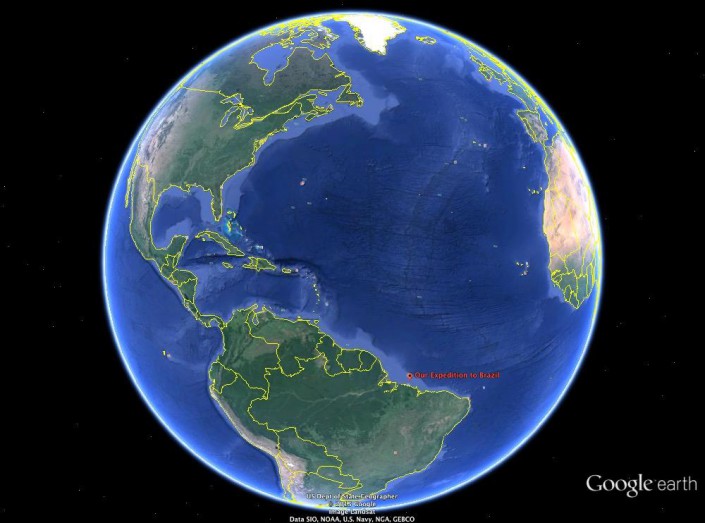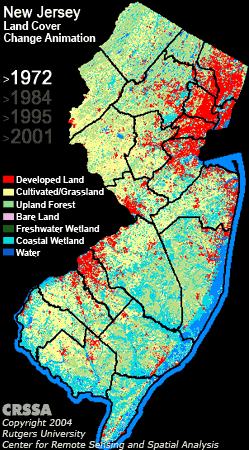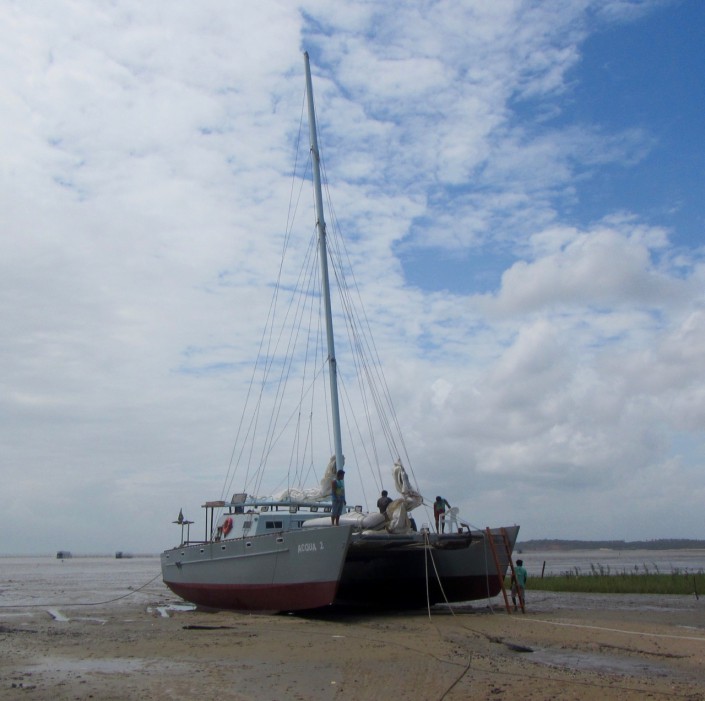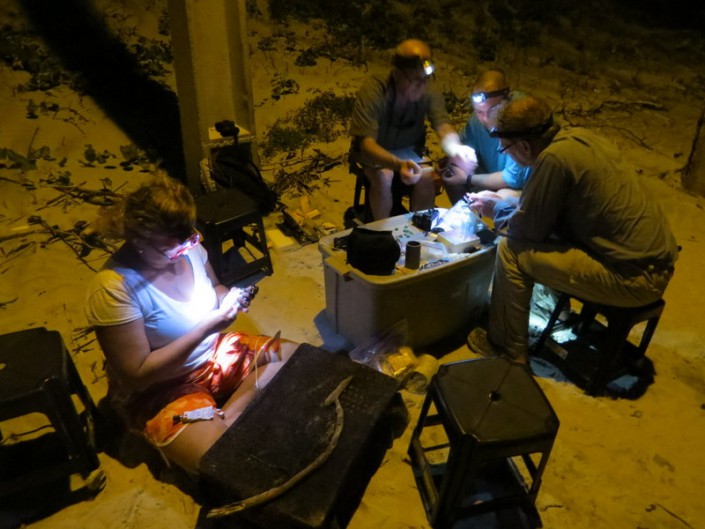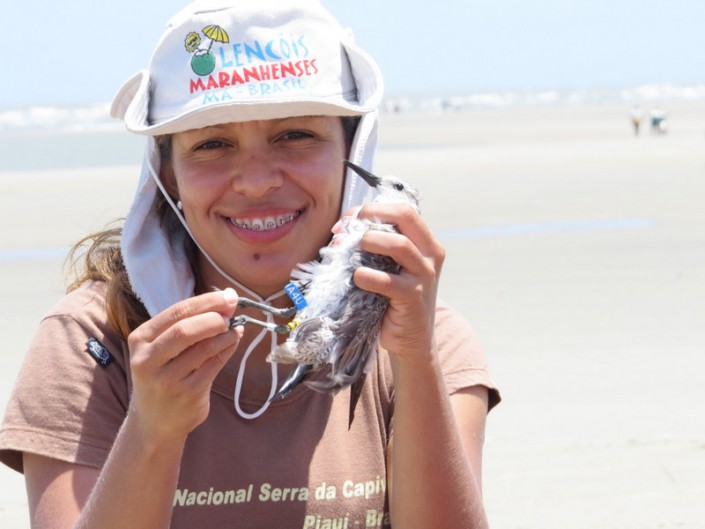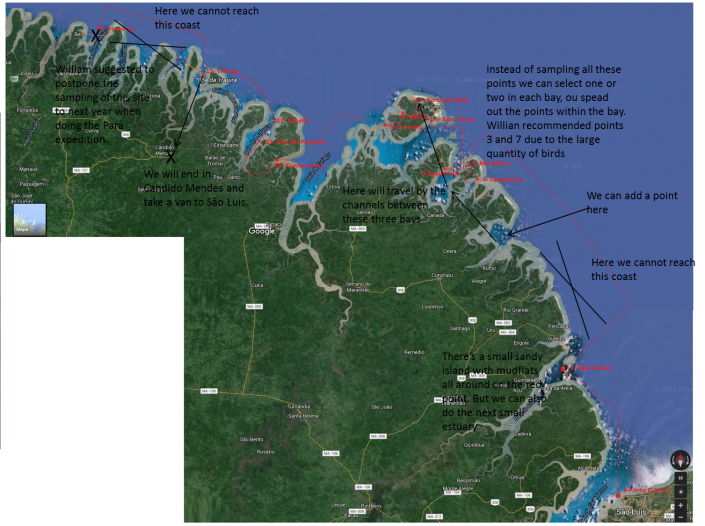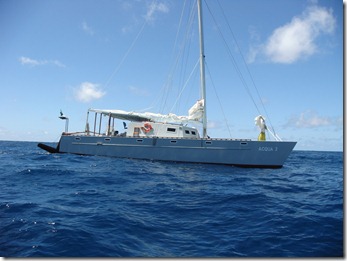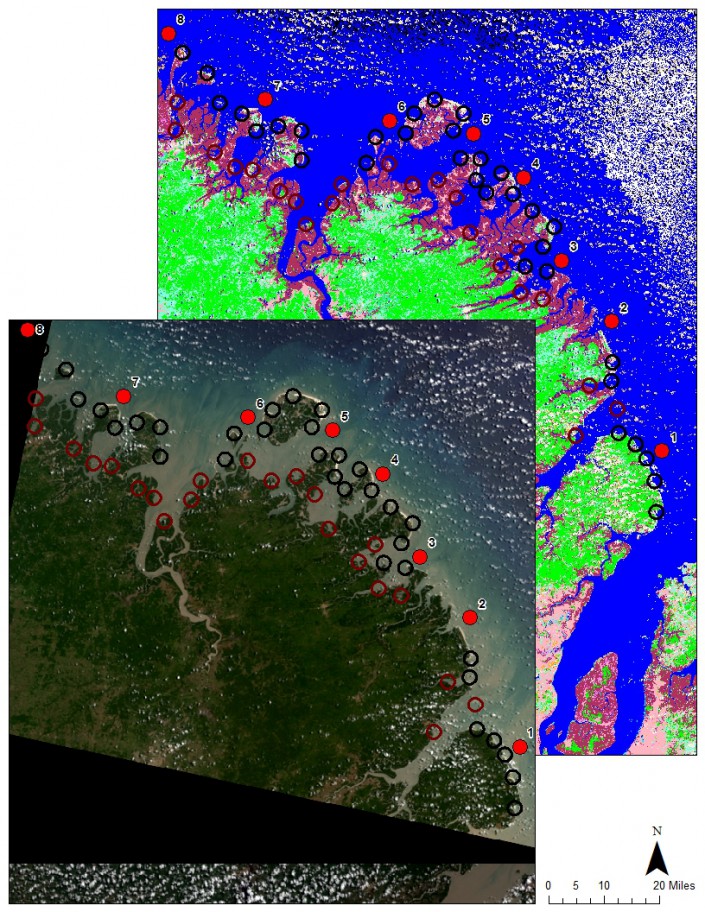Shorebird Expedition Brazil: The rights of traditional communities
By Larry Niles, LJ Niles Associates LLC
Over the last few days of our expedition, we left the state of Para and flew to Sao Luis in the adjacent state of Maranhao. There we began the next phase of our work, trapping red knots, ruddy turnstones and other species, as we have done since 2014.
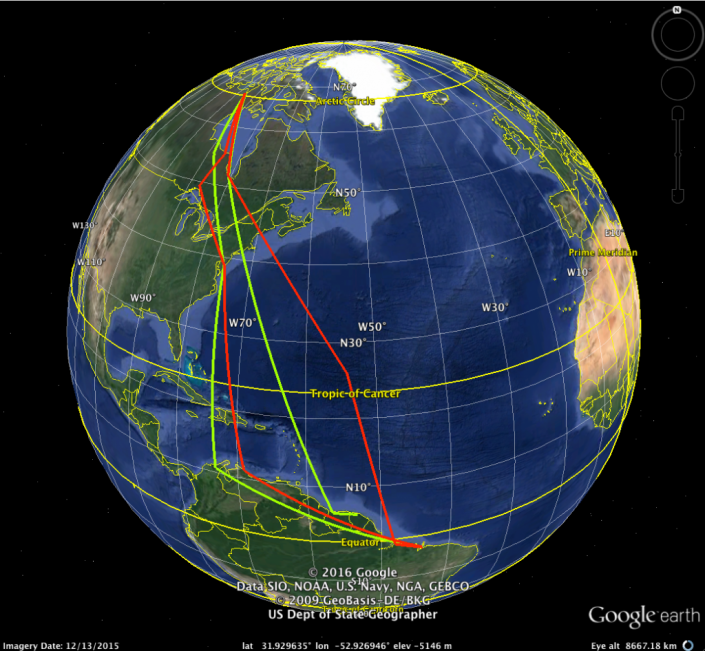
But prior to leaving Para, while we stayed in the village of Apiu Salvatore, the fishermen asked to meet with Max. He hadn’t planned it, so at first, the reason was unknown. The fishermen of the village knew Max represented ICMBio, and that Apiu Salvatore fell within Resex Gurupi-Piria, one of the Brazilian agency’s many extractive or Resex reserves. As I described in the previous post, ICMBio conserves natural resources in each reserve for the benefit of traditional communities, such as this one. So Max had a good idea what the community had on their mind.
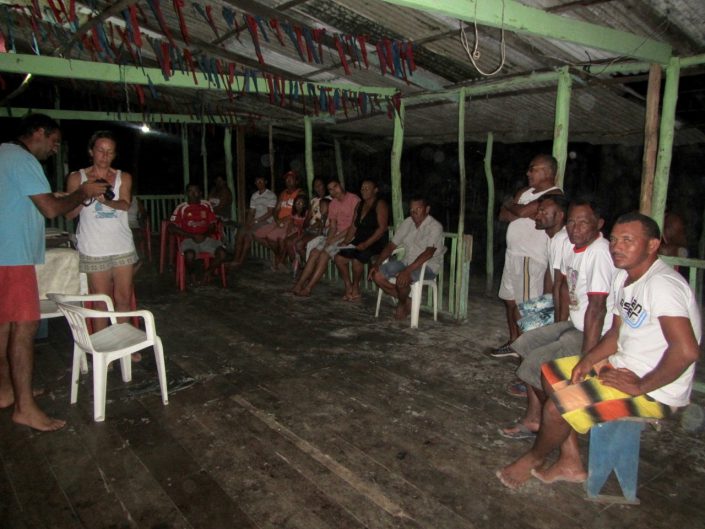
We entered the large open meeting space under a thatch roof with a good breeze cooled by a sudden evening downpour. The association leader, Antonio, got down to business. He explained the problem of immense ships lurking offshore, spreading giant purse seines or immense lines of baited hooks, and stealing all the fish. It threatened their own lives, not only their livelihoods but their very existence. One could see very clearly how vital fish were to these fishermen. The community consumed virtually no goods; most of their daily needs came from the sea or their backyards. Chickens, pigs, even lambs filled backyards. Fruit like mangos and avocados literally fell from the trees. I saw no washing machines, microwaves, coffeemakers, or nearly any of the appliances that litter a typical U.S. kitchen.
There was one modern device found in every hut and cabin, no matter how small or dilapidated. All had TVs. How, I imagine, can they fit in this primitive world while gapping at the lives of the rich and famous? These were not people ignorant of the world, but unfortunately, they could be innocent as lambs when faced with the greedy schemers and politicians of Brazil. And as the ongoing corruption scandals here evolve, it seems like nearly every politician serves their own or other greedy interests.
So it is understandable that the fishermen’s first thought was to go to the Catholic Church. But then we came. So they asked for Max’s advice.
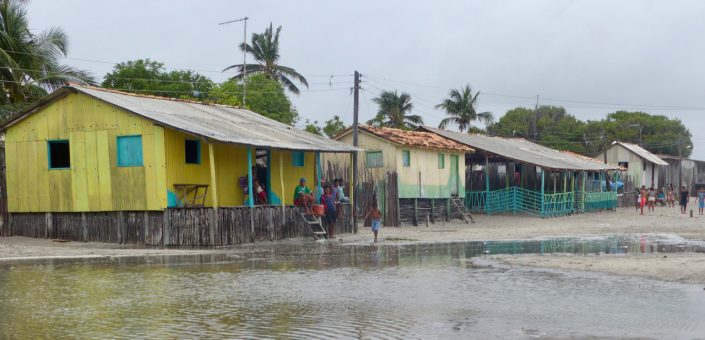
He quickly determined the fisherman had no idea they had legal rights to the fishery. He patiently explained the concept of ICMBio reserve system, the system of which they are a part. In theory, they could unify and certify their observations, take it to a judge and get a decision that would force the government to stop the theft by the international fishing fleet, at least in principle. Max and Danielle explained these rights and the group seemed sufficiently inspired. At least they left happy.
Why did they not know their rights? Max explained to me that the reserve manager for this area covered 60 other villages and that ICMBio has suffered 3 years of budget cuts. He reminded me how long it took to get to this village. So it’s the usual story familiar to U.S. agency biologists. Here, as it is in rural U.S., but with a more obvious impact, starving good government often only starves the people who live on the land, the land itself and the wildlife, who depend upon it.
For me, it meant something more. We proposed this project to create better protection for shorebirds. We took the usual approach. First, do the surveys then will create scientifically defensible descriptions of the habitat’s value. Finally, we overlay the threats: shrimp farming, oil spills, human disturbance, predators etc. then develop counter-measures.
I learned that nigh there is only one threat in this, one of the most important shorebird habitats in the world. It looms large above all others – if you erode ICMBio’s system of protection all the other threats will grow and decimate the fragile ecology of the area. Grow the ICMbio system and the traditional communities will enforce their legal right to conserve. They can monitor the threats and work with the agency to stop them. The laws already exist. The monitoring system is already in place. But this meeting pointed out they need more help.


Dr. Larry Niles has led efforts to protect red knots and horseshoe crabs for over 30 years.

